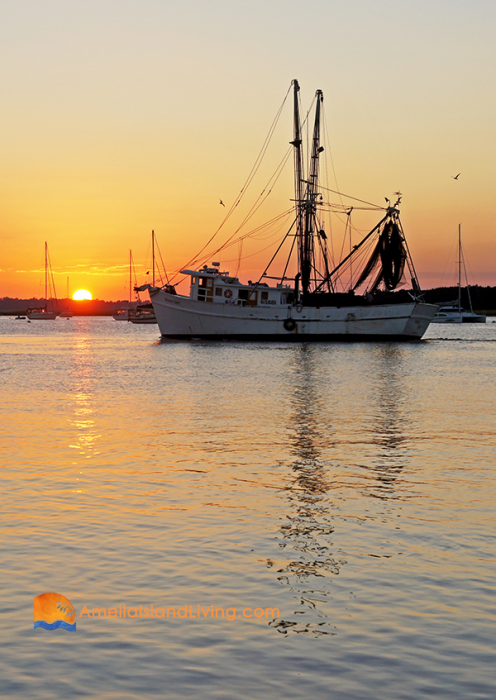
U.S. Wild-Caught Shrimp
Shrimp is a big deal in Fernandina Beach, Florida, birthplace of the modern shrimping industry in America. The riverfront city’s biggest annual event of the year, the Isle of 8 Flags Shrimp Festival, is always the first weekend in May. It’s a celebration of shrimping held here for more than half a century.

Shrimp is No. 1 Seafood
Americans love shrimp, the favorite seafood in the USA. But how safe is the shrimp eaten nationwide? Known for its investigations and product research, Consumer Reports issued a warning about shrimp. For some, the test results of shrimp being sold across the nation may be an eye-opener.
Shrimp Buyer Beware
Reportedly, 94% of shrimp in the USA marketplace is not wild-caught, but rather the imported and farmed shrimp from overseas suppliers.
Watch Consumer Reports’ YouTube video (below at end of article), explaining their findings about the shrimp Americans eat. Plus tips on what to look for when buying shrimp. Learn about packaging and labels that may be confusing or deceptive.
Prompted by their research findings on imported and farmed shrimp being sold in the American marketplace, Consumer Reports, an independent, non-profit organization, made the following recommendation:
“Wild shrimp from U.S. waters may be worth the higher price. Of all the shrimp tested, wild shrimp were among the least likely to harbor any kind of bacteria or contain chemicals. When it comes to safety and sustainability, responsibly-caught U.S. wild shrimp is Consumer Reports’ top choice.”
According to Consumer Reports (April 24, 2015), there are “public health concerns especially with imported, farmed shrimp; FDA needs to step up inspection at U.S. ports and overseas shrimp farms.”
Unfortunately, the quantity of shrimp caught by U.S. commercial fishermen cannot fulfill the huge demand to satisfy America’s appetite for shrimp. Availability of Atlantic wild-caught shrimp can fluctuate due to various factors including reproduction cycles and seasons. Also, the number of U.S. shrimp boats, sadly, has declined over the years. Generational fishing families have been under market pressure from cheaper foreign imports, making it difficult to survive — it’s become hard to earn a living shrimping.
Locally, Amelia Island residents and visitors can often find wild-caught shrimp at some restaurants, ask whether it’s wild when dining out. Or visit Atlantic Seafood, the red shack by the Fernandina public boat ramp downtown, to purchase wild-caught shrimp by the pound. Some local grocery stores also sell Atlantic wild-caught shrimp.
Tips About Buying Shrimp
Find out lots more about seafood in the marketplace by visiting SeafoodWatch.com.
Read more about Consumer Reports’ shrimp research and findings, full article on Consumer Reports’ website.
